Xeriscape Landscaping Plants For The Arizona Desert Environment.
Pictures, Photos, Information, Descriptions,
Images, & Reviews.
Cactus.
Cardon, Pachycereus pringlei.
We Are Proud Of Our SafeSurf Rating!
Click On Any Of The Following Links By Amazon.Com
For Books, & Videos About Wildflowers Of Arizona & The Southwest USA. No Obligation!
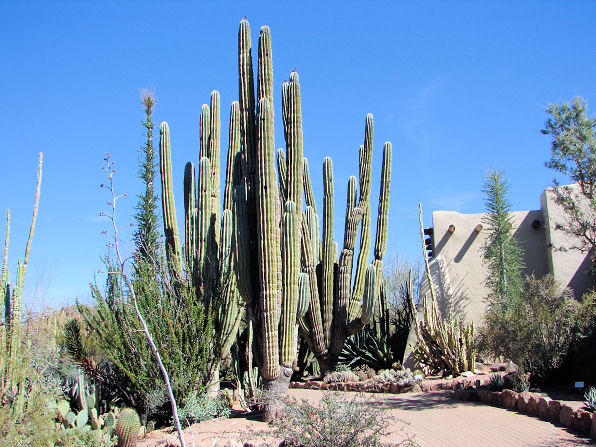 |
| Cardon, Pachycereus pringlei, March 3, 2008. Phoenix Arizona Desert Botanical Garden. These Cardons Were Planted In 1941. |
|---|
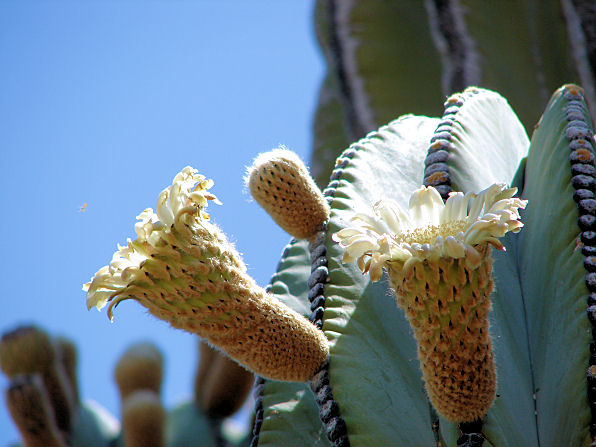 |
| Cardon, Pachycereus pringlei, Flowers. May 5, 2008. Phoenix Arizona Desert Botanical Garden. |
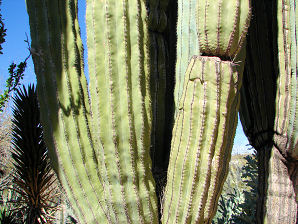 | 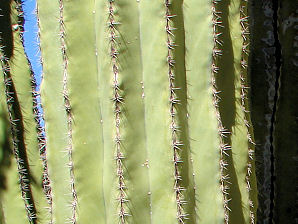 |
| Cardon, Pachycereus, pringlei. | Cardon, Pachycereus pringlei. |
|---|---|
 | 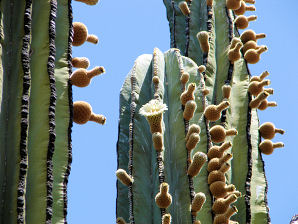 |
| Cardon, Pachycereus, pringlei. | Cardon, Pachycereus pringlei. |
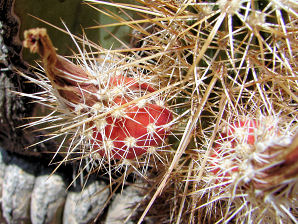 | 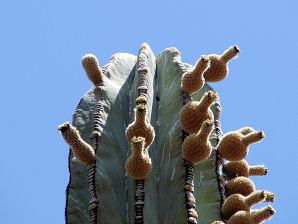 |
| Cardon, Pachycereus, pringlei. | Cardon, Pachycereus pringlei. |
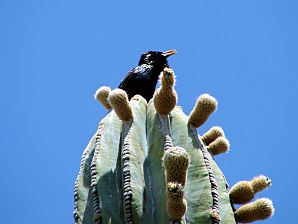 | 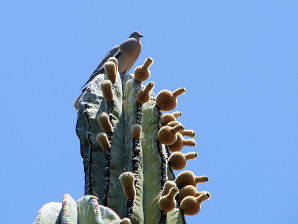 |
| Cardon, Pachycereus, pringlei. | Cardon, Pachycereus pringlei. |
 /
/

Cardon Cactus.
We wish to thank Wikipedia, the free encyclopedia for some of the information on this page. We share images and information with Wikipedia. Pachycereus pringlei is the tallest cactus in the world and the largest recorded one is 62.9 feet tall and with a central trunk over three feet thick. Normally in cultivation they are a little over 40 feet tall. The stems are from 8 - 12 in. wide with from 10 to 17 ribs; they have large areoles, often confluent; they have 1-3 centrals; and from 7-10 radials varying with the age of the plant. The fruit of this cactus was an important food for the hunter - gather, Seri people in Sonora, mexico. Their own name for themselves is Comc�ac. They call the cactus xaasj. During blooming season, flowers appear on the upper tips of stems, especially stems with warm, southern exposure. Flowers open in the afternoon, stay open all night, then close about mid-morning the next day. The Card�n, like most of the other columnar cacti of the southwestern corner of North America, depends on nightly visits from nectar feeding bats for pollination. The Card�n grows best in its natural habitat in the deep soil of alluvial fans of arroyos and other waterways. To be more specific it grows on rocky hillsides and deep soils of alluvial fans off the eastern base of the Sierra de San Pedro M�rtir, in the southern San Felipe Desert, and upon the level plains from San Felipe and El Rosario south to the Cape Region. Card�n is also found on many of the Gulf of California Islands and upon coastal Sonora south to Guaymas. We have actually been suprised seeing it upon small islands in the Sea Of Cortez! Can take full sun but does best in some shade when young in Phoenix.
Quick Notes:
Height: Up to 62.9 feet tall. Most are about 25 feet. Most of the large ones are about 40 feet.
Flowers: White, up to 3 inches long.
Blooming Time: Southern Arizona, March - April. Phoenix Area, April - May.
Fruit & Seeds: Red, round fruits that are about 2 inches in diameter. The fruits red pulp is often used to make jellies.
Leaves or Segments: Cylendrical and Green, from 2 to 3" in diameter. with 12 to 18 small ribs. They often grow together in a base of a loose cluster of stems which can spread out as large as 3 feet in size.
Spines: The trunk and branches have 11 to 17 ribs covered with many areoles of 20 to 30 gray spines, as they become older. The new spines are from pink to dark red to purple before turning gray.
Fruit: Red, Up to 1" long and 3/4" in diameter fruit which is edible.
Seeds: Black oval - about 1/32 inch in length.
Found: Native to central Baja California, Mexico.
Elevation: 0 -3,200 Feet.
Hardiness:
Soil pH requirements:
Sun Exposure:
Habitat: Lower elevations where water is available. It grows well in sand, sandy loam. It needs good drainage and aeration. It is remarkably tolerant of alkali.
Miscellaneous: Photos Taken March 3, 2008. And May 5, 2008. Phoenix Arizona Desert Botanical Garden.
|



We Are Proud Of Our SafeSurf Rating!
Click On Any Of The Following Links By Amazon.Com
For Books, & Videos About Xerioscape Plants Of Arizona & The Southwest USA. No Obligation!
Back To Arizona Xeriscape Landscaping Main Page.
Back To Xeriscape Cactus Page Three.
Back To Arizona Wild Flowers Home Page
Back To DeLange Home Page
© 1966 - Present, Audrey, Eve, & George DeLange
| © 1966 - Present, Audrey, Eve, & George DeLange |


